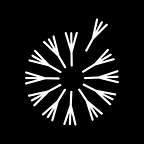Art vs Design: Exploring Their Interwoven Roles in Creativity
Look, we are not going to try to prove whether design is art or vice versa. This ongoing debate has persisted for years without finding a conclusive answer, highlighting its complexity as a field that requires nuanced exploration. So, here’s the plan. In this article, we invite you to join us on a journey of appreciation and comprehension, delving into the elaborate intertwining of art and design.
It’s a duet, not a duel
Have you had that peanut butter and jelly sandwich breakfast? Exactly, it’s so good and complimentary, that you can’t really imagine removing one from the other. Their synergy creates a harmonious blend that enhances the overall experience, much like how design and art seamlessly integrate to elevate creative expression. For instance, consider iconic logos like the Apple logo designed by Rob Janoff. The sleek design not only represents the brand but also evokes a sense of creativity and innovation, akin to a piece of art.
Similarly, in architecture, the design of buildings like the Guggenheim Museum in Bilbao, Spain, by Frank Gehry, not only serves functional purposes but also embodies artistic elements that enhance its aesthetic appeal. What’s even more interesting is that out of the 24,000 square meters, 9,000 are exhibition spaces. The Museum’s architect truly blended architecture, design, and art to create a unique experience.
Understanding the differences
In order to understand how Art and Design intertwine, first, we need to comprehend their differences and accept that they each bring unique perspectives to the creative process.
Intention
- Art: The purpose of Art is to raise questions and provoke your way of thinking. You know, it’s this feeling after visiting a gallery or art performance where your head feels heavy and you are eager to discuss your observations! What you’ll often find is that everyone has a different perspective and different realizations. That’s the effect of art and a fundamental difference with design.
- Design: It is usually not a good sign if design is interpreted in multiple ways. Its purpose is to send a clear message to the audience and solve a problem that demands a concise and effective solution. It helps, of course, if it’s visually striking enough to quickly capture people’s attention so that they engage with the intended message without hesitation. Designs like the Red Bull charging bulls logo or the Coca-Cola red script achieve this by immediately drawing the eye and encouraging further engagement.
Process
- Art: While both art and design involve creativity, their paths to inspiration and execution diverge significantly. The artistic process is often messy and intuitive, fueled by experimentation, emotional exploration, and even happy accidents. Artists might brainstorm sketches, play with mediums, and iterate organically, letting their vision guide them.
- Design: In contrast, designers follow a more structured, data-driven approach. Research, user testing, and problem-solving form the backbone of their process. They adjust the process based on the feedback they receive, ensuring their creation achieves its intended function and resonates with the target audience. We could argue then as much as there is a creative element here involved — it is usually guided, with a clear goal in mind.
Constraints
- Art: In the realm of art, limitations are often self-imposed, serving as fuel for creative exploration. An artist might restrict themselves to a specific color palette, material, or even form to push their own boundaries and spark new ideas. Take for example the style of Yves Klein. Renowned for his signature “International Klein Blue,” a vibrant ultramarine he developed himself. By restricting his palette to this single color, Klein explored the nuances of space, light, and perception through subtle variations in texture and application.
- Design: Restraints and rules are somewhat familiar concepts shared between design and art, yet they manifest differently in each discipline. In design, these constraints are presented as essential parameters guiding the creative process, encompassing client specifications, project objectives, budget limitations, and technical considerations. Again, it’s about design’s purpose rather than an artistic approach — limitations in design enhance functionality and address practical needs while maintaining a clear and cohesive vision.
Outcome
- Art: No compromise. Freedom of expression. An open debate. That’s typically the outcome you experience with art. It exists for oneself, and you simply admire it without feeling the need to respond to it. Unlike design, which often prioritizes functionality and practicality, art is more about self-expression and evoking emotions.
- Design: Unlike art, designers don’t feel the need to be creative throughout the entire process of their work. It’s all based on structure, with functionality being the most fundamental need. That being said, design is influenced by art, and incorporating artistic elements can enhance the final outcome, as people respond well to aesthetics and visual appeal.
Final thoughts
Our opinion is that while art and design differ in some aspects, it’s also undeniable that they influence each other a lot — their interchange fuels innovation and enriches both fields, contributing to a dynamic and vibrant creative scene. Both tell their own story, share the same creative visual principles, and serve a purpose. So let’s drop this endless debate whether or — but just consider both to be equally valuable forms of expression. If you need advice on design or anything related, feel free to reach out to us. We’re here to assist you in unleashing your creativity and bringing your ideas to life!
